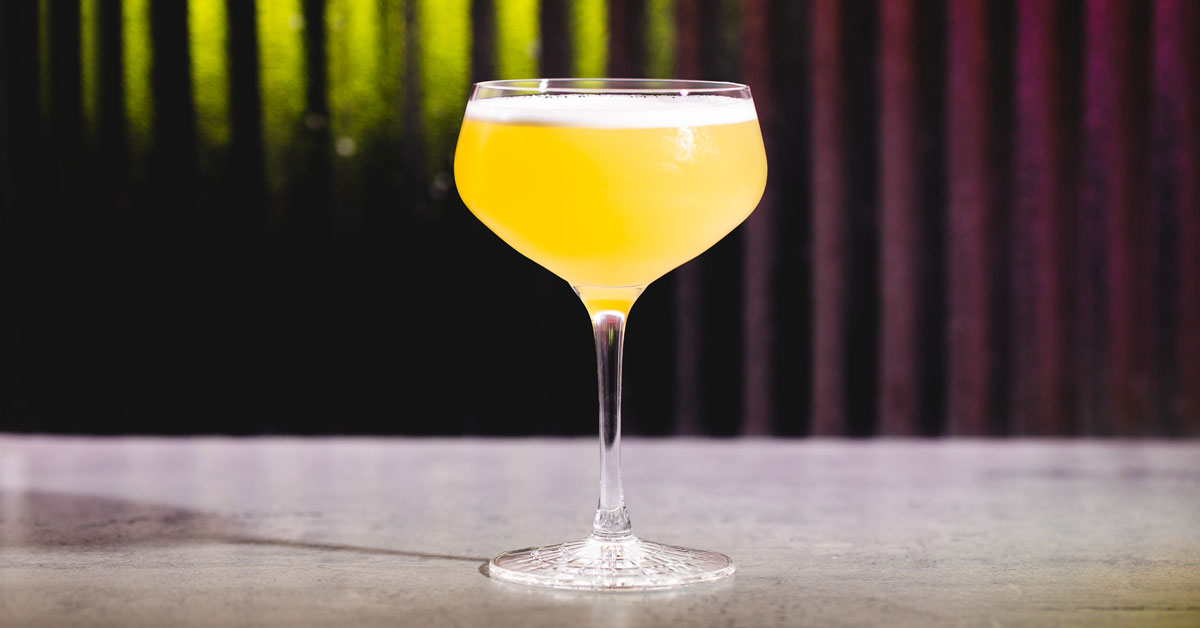If you ask a well-versed modern bartender for a Southside, you’ll probably get a Gimlet variation or a Tom Collins riff, both featuring a distinctive mintiness and both certainly made with gin. But if you order a Southside in Baltimore, you’ll get something different. There, Southsides are made primarily with rum—and sometimes with vodka or rye—instead of gin.
The major throughline in every variation of the Southside is the history of country clubs. During the Gilded Age, such institutions were built just outside metropolises like New York, Philadelphia, and Baltimore. The original version of the cocktail was born at the South Side Sportsman’s Club on Long Island, then a lemon-laced variation on a Mint Julep made with gin. (Because the drink may predate the rise of dry gin, it’s likely that genever or Old Tom gin was originally used as the base.) It didn’t take long for the drink to migrate to other country clubs, as the American elite hunted and fished their way down the East Coast.
Some hold that the Maryland-style Southside originated soon after the Long Island version, but because of the exclusivity surrounding country club culture, it isn’t easy to pinpoint the advent of the Baltimore version. And in modern-day Baltimore, there are more than a few opinions on how the drink should be made.
Brendan Dorr, co-owner of the gin-focused bar Dutch Courage, is one of the few bartenders in Baltimore who defaults to gin. His is a product of the cocktail revival’s translation of the Southside as a minty variation on the Gimlet that omits the soda water from the original recipe. Dorr realizes that, in a city like Baltimore that holds its traditions so dear, his take is wildly contrarian. Though he’s a Maryland native, his allegiance to gin is still stronger. “I think the classic gin and mint go so well together,” he says. “There's botanicals, fresh herbs—it just pops.”
On the other end of the spectrum is the Southside served at True Chesapeake Oyster Co. The seafood restaurant’s take is an ode to the Baltimore Southsides that came out of the area’s country clubs and are enjoyed across the region at “hunt cups”—steeplechase-like events that have a strong tailgating tradition and derby-like costume. Of course, the drink also pays homage to the annual Preakness Stakes, held every May at Baltimore’s Pimlico Race Course.
The Rise of Baltimore’s Orange Crush Cocktail
The Orange Crush cocktail—a mix of OJ, orange vodka, triple sec and lemon-lime soda—may have started on Maryland’s shores, but it's become a phenomenon throughout the state and beyond.
The Most Underrated Classics?
Five deep-cut cocktails that deserve a turn in the spotlight, according to bartenders.
In Search of the Ultimate Gimlet
We asked 14 of America's best bartenders to submit their finest recipe for the Gimlet—then blind-tasted them all to find the best of the best.
“It’s an old Baltimore City country club drink—and it’s contested between whether it’s the Elkridge country club or the Gibson Island country club,” says bartender Chuck Perry. Built like a mule in a 16-ounce glass, his drink reads like an aged rum punch with both lemon and lime, and mint, and topped with ginger beer. Perry says the key to a great Southside is in the pre-batched mix of citrus, sugar and mint, and that the concept of a DIY Southside mix is decades-old in Baltimore drinking culture.
Aaron Joseph of Baltimore’s Cane Collective and Cane Mixers also produces a Southside mix that he sells. As a Black bartender and entrepreneur, he sees more than just a drinking tradition in the Southside; he sees a legacy. “You’ve got two iconic African American bartenders at very prominent country clubs that were basically the resource and the provider of Southside mix for generations,” Joseph explains. Those two men were the late George Lee, who tended bar at Green Spring Valley Hunt Club, and the late Andrew “Mr. Andy” Ervin, longtime barman at the Elkridge Club. Both sold their mix in addition to bartending at the clubs.
Some years ago, Joseph had the privilege of visiting with Ervin at the Elkridge Club and watching him compose a Southside in person. He developed his own recipe that combines what he learned from Ervin with his craft cocktail knowledge. Joseph prefers a clean white rum for the base over an aged expression, and shakes the rum with lemon, mint and simple syrup before being strained over 1.25-inch cubes in a double rocks glass. He tops the single-serve punch with about an ounce and a half of club soda and garnishes it with mint and a lemon wheel.
Though there is a fair amount of debate about which Southside is the most authentic, Baltimore’s close-knit bartending community maintains a friendly attitude toward the issue. “I’ve always found that bartenders tend to like to go around to other places, see what everybody’s doing, and talk about it,” Perry says. Because of Baltimore’s unique version of the drink—and gin purists like Dorr—every part of the Southside’s history is being represented in the city, from its Long Island roots to steeplechase tailgates to the legacy of African American country club bartenders. “Generations upon generations of people in Baltimore have drunk Southsides,” says Joseph. “You can still go to these country clubs and they’re still known for their version...those menus haven’t changed for 70 or 80 years.”






